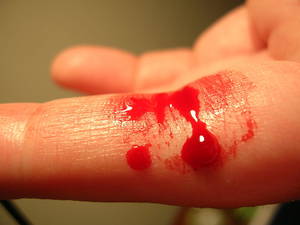A clotting control system based on laser-activated nanoparticles has been developed by scientists in the US.
Controlling the blood's coagulation system is  a significant healthcare cost. In many developed nations, blood-thinning agents rank as one of the leading causes of death due to adverse drug reactions.
a significant healthcare cost. In many developed nations, blood-thinning agents rank as one of the leading causes of death due to adverse drug reactions.
Now, a team at MIT have come up with a possible solution in the form of an anti-coagulant and anti-coagulant-antidote that can be activated non-invasively using a laser.
Writing in PLoS One, Helena de Puig and her colleagues have crafted a short sequence of DNA that folds itself into precisely the right shape to lock onto and inactivate a blood-clot triggering enzyme called thrombin, thereby thinning the blood.
At the same time, the team also crafted an aptamer that is the mirror image of the first thrombin-binding DNA aptamer; this works like an antidote, soaking up the first aptamer to prevent it from blocking thrombin and therefore reverse any anticoagulant effects.
Next they attached these two aptamer species to two differently-shaped gold nanoparticles.
The thrombin-binding aptamer they attached to a short rod-shaped particles (nanorods), while the antidote molecule they attached to the small bone-shaped particles (nanobones).
In vitro tests showed that the nanorods and nanobones could be triggered to release their aptamer cargo by shining light onto them.
But the differences in the shapes of the two particle types means that they respond exclusively to different colours of light, meaning that one colour can be used to release the anti-coagulant aptamers and a different colour to release the antidote.
In this way the correct anticoagulant effect can be achieved - and reversed - at the flick of a switch...
- Previous "Mark" don't dance
- Next Human sleep sensitive to moon cycle










Comments
Add a comment